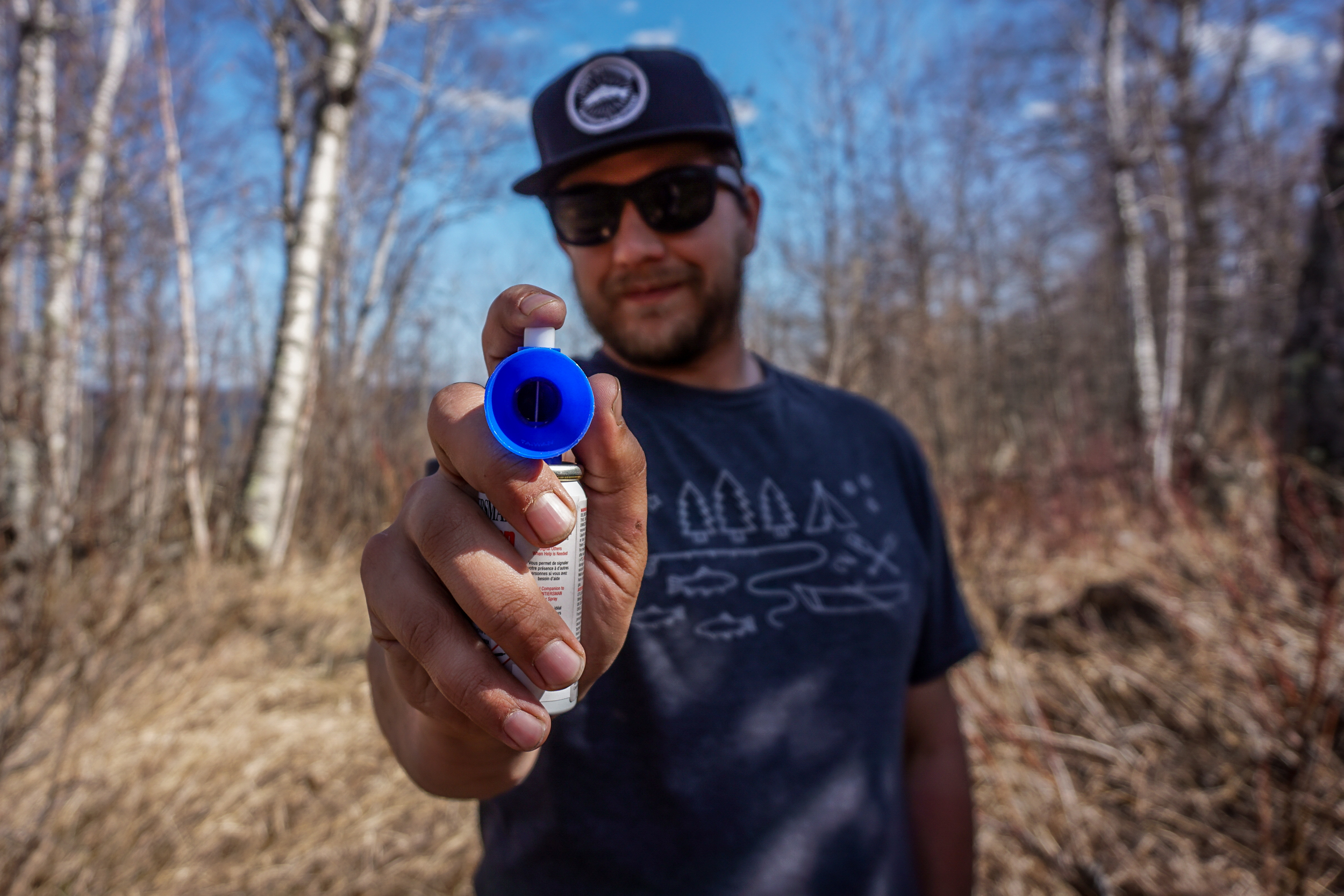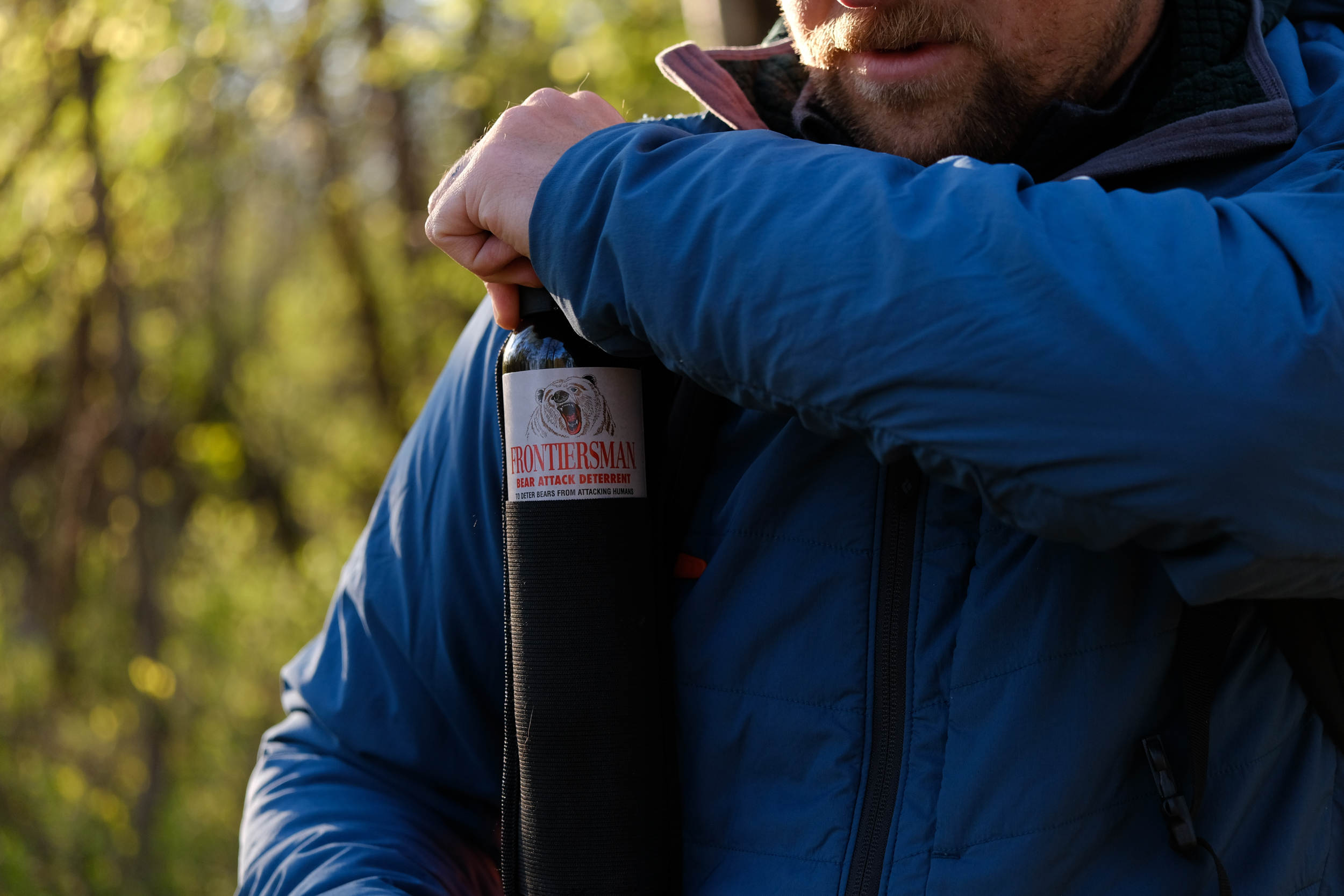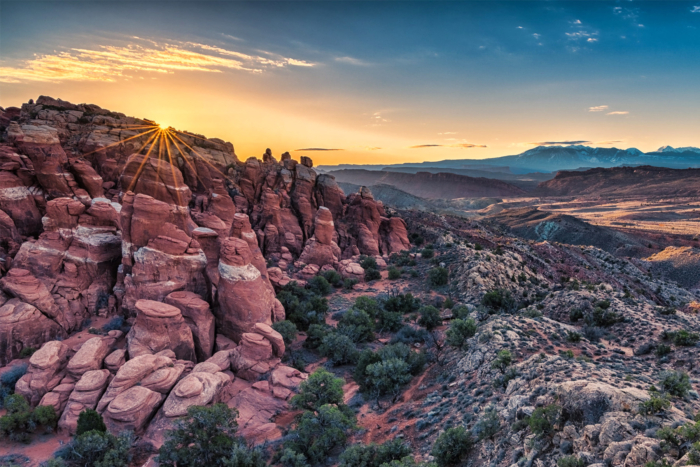If you’re in the backcountry, you’re likely in bear country. Here’s what you need to know to stay safe around bears and survive an encounter with an aggressive bear.
It’s important to know how to behave in bear country and what safety measures to take. There are certain precautions and deterrent strategies that can prevent an encounter.
Human-bear encounters are infrequent, and actual attacks are rare. But when they do happen, they can be serious. Bear spray and other deterrents are must-pack survival items for trips into bear country.
Black bears are the most common type of bear, dwelling primarily along the West Coast and the Appalachian and Rocky mountain ranges.
Brown bears, or grizzlies, are mostly confined to parts of Montana, Utah, and Yellowstone National Park in the lower 48. They are prominent in coastal Alaska and Canada.
If you’re hiking, biking, or hunting in those areas, a bear spray and other deterrents are your best bets to prevent a dangerous encounter with a startled bear. And having that peace of mind might even help you enjoy a potential bear sighting from a safe distance.
Be Less Attractive to Bears
When camping in bear country, one of the most essential pieces of gear is a bear safe. They are so effective at reducing human-bear encounters that many national parks and wilderness areas require campers to use them.
Bears have a keen sense of smell, often considered the best among land mammals. By conservative estimates, a bear can smell food from 2 miles away. Their sense of smell is thousands of times better at tracking down food than the human sense of smell, which is focused more on distinction than range.
A bear safe works in two ways. First, it helps lock in odors, reducing the amount of scent from your campsite. That goes a long way toward preventing an encounter.
Second, if a bear does find the safe, it will find it extremely difficult to open. Controlled tests at the Grizzly & Wolf Discovery Center (GWDC) in West Yellowstone, Montana, certify the bear-resistant nature of the Frontiersman INSIDER Bear Safe.
When you’re camped for the night, be sure to put any food or other scented products, like toothpaste and sunscreen, into a bear canister and place away from your site. Ideally, you place it downwind, a football field’s distance away.
Make a Little Noise Out There
In part, we are drawn to the outdoors for solitude and quiet. In bear country, however, you should make a routine of noise.
While hiking, you can talk and routinely shout for bears, especially when you come upon trail sections with poor visibility. You can also save your voice and strap a bear bell to your backpack. We recommend bells that come with a magnetic silencer to “turn it off” without having to remove it.
A much louder option is a bear horn, which releases a blast that can be heard up to half a mile away. It will notify any bears in that range of your presence.
Bear containers, bells, and horns are mostly passive precautions intended to reduce attracting and encountering a bear. After all, a surprised bear is more likely to respond aggressively (or defensively, depending on how you look at it).
What to Do if You See a Bear
Bear spray is more effective than a firearm at repelling a grizzly, according to the U.S Fish and Wildlife Service. That’s in part due to a gunshot potentially further aggravating the bear’s instinct to defend itself.
If you’re in the open and see a bear far off, you should stop and observe it. Has it seen or smelled you? Keep your eye on the bear and wait patiently to see if you pique its interest. If not, you may be able to watch the bear from afar and enjoy the experience! Just be sure to keep your distance and safely move along.
If the bear is blocking your path, you can reroute, or wait about 30 minutes from the time you last saw the bear, before continuing. Once you’ve decided to proceed, talk loudly, clapping your hands along the way.
If a bear takes interest or you come across one by surprise, don’t turn your back or run. This is the type of advice that gives runners and bikers pause. “What if I was already running/riding?” you may ask. No matter what, stop and pull out your bear spray. Don’t try to outrun or out-ride them.
If you’re on a bike, put it in front of you, sideways. That way you appear larger and have some kind of a buffer — just in case.
If the bear charges, it’s time to fight back with a targeted spray of pepper irritant. When the bear is within 35 feet, pull the trigger, aiming at the bear’s eyes, nose, and mouth. While the bear is incapacitated, retreat and escape to safety.
But before you head into the backcountry with bear spray, it is smart to practice how to use it.
Prepare for a Real Bear Charge
Simply buying bear spray doesn’t prepare you for an encounter. You need to mentally prepare and train yourself to reach for it and use it. That’s why Frontiersman Bear Spray comes with a training canister of non-irritant spray.
Grizzly bears can run 30 mph. If you want to replicate that experience for training purposes, have a friend drive by at 25 mph and try to spray the car before it passes you. It has a range of 35 feet, so this practice will also help you visualize that distance.
For the most accurate aim, hold the can in one hand and pull the trigger with the other. The canister has a slight kick, so a good grip will help keep the spray’s stream aimed lower, at bear height. Spray in 2- to 3-second bursts.
These Products Can Prevent Bear Encounters
SABRE’s Frontiersman Bear Spray is formulated with 2% major capsaicinoids, the highest EPA-approved strength, and has a range of up to 35 feet. Its spray has also been field-tested by Elmendorf Air Force Base in Alaska and by Brown Bear Resources based in Missoula, Montana.
Bear Spray
Remember: Bear spray does expire. If you’ve had your bear spray for more than 3 years, it’s likely time to resupply. Be sure to check the expiration date on your spray before you venture out.
You should also replace your bear spray if it has been previously discharged or exposed to extreme temperatures.
Shop the Frontiersman Bear SprayEasy-Access Holsters
The last place you want your bear spray is out of reach. Whether you’re running, biking, or hiking, the Frontiersman Chest and Belt Holster will ensure that your spray is within reach and easy to access if you need it.
And if you’re in a thicker forest or expect to encounter a bear, it’s always best to carry it in your hand (with the safety on) and at the ready.
Shop the Frontiersman Nylon Belt Holster Shop the Frontiersman Nylon Chest Holster
Bear Horn
Give bears a heads-up with the Frontiersman Bear Horn. It’s loud enough to let bears within a half-mile radius know you’re there.
Shop Frontiersman Bear HornBear Bell (With Magnetic Silencer)
An ideal complement to bear spray, bear bells alert wild animals that you’re in the area, reducing your chances of startling a bear or other wildlife into aggressive behavior. The magnetic silencer makes it simple to wear the bell without it making a sound so you don’t have to detach when not in use.
Shop Frontiersman Bear BellKnowing basic bear safety tips and field tactics to prevent a human-bear interaction will keep you — and the bears — safer in the backcountry. Using deterrents and carrying a spray will help you feel safe as you hike and camp among one of nature’s most revered residents.
This article is sponsored by SABRE. Find out more about Frontiersman bear spray and other products here.















